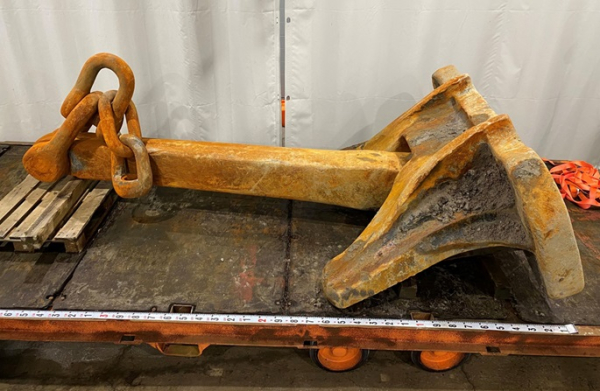
The Finnish Transport and Communications Agency Traficom has completed the Port State Control (PSC) inspection of the Eagle S and detained the ship, said a government press release on Thursday.
Traficom inspectors found 32 deficiencies in the Eagle S. Three of the deficiencies were so serious that they led to the ship being detained.
These deficiencies affected the ship's fire safety, navigational equipment and pump room ventilation. The ship may not be operated before the serious deficiencies have been rectified.
"The PSC inspection, which Traficom carried out, is a concrete example of this: if we notice problems, we will address them,” said Minister of Transport and Communications Lulu Ranne in the press release.
The PSC inspection ensured that ships comply with the requirements of the relevant international conventions.
Traficom PSC Officers inspected the technical state, environmental aspects, certificates and documentation of the ship and the conditions of the crew on board.
The inspection also included drills to ensure the correct operation of the crew and equipment. Before the ship can continue its voyage, Traficom must inspect it again to ensure that the deficiencies which led to its detention have been rectified.
Meanwhile, the criminal investigation into the cable ruptures in the Gulf of Finland continued on Thursday with the forensic analysis of the anchor, said the National Bureau of Investigation (NBI) in a press release.
“The anchor is undergoing a technical examination, including steps to confirm that it belongs to the tanker Eagle S,” said Risto Lohi, tactical leader, Detective Superintendent of the National Bureau of Investigation.
The anchor raised during the joint operation by authorities on Monday (January 6) measures approximately 4 meters in length, 2.5 meters in width, and it weighs 11 tons.
The technical examination will focus on the question when the anchor became detached from its chain. The location where the anchor was found is near the place where Finnish authorities instructed the tanker Eagle S to raise the anchor it had been dragging.
“If the anchor only came loose during the hoisting, it is likely that the anchor could have caused further damage to the seabed infrastructure if the vessel had continued its journey,” said Lohi.
The sequence of events leading up to the ruptures is already quite clear in a technical sense to the police, but there is still a lot of technical data storage media to be analysed, said NBI.
Underwater investigations have determined the length of the drag trace on the seabed to be approximately 100 kilometres.
Earlier on January 6, anchor of the Eagle S has been recovered from the Gulf of Finland.
On December 31, 2024, seven staff members of tanker Eagle S whose status in the criminal investigation is that of a suspect have been subjected to a travel ban.
Police on December 28, transferred the Eagle S tanker, the suspect of Estlink 2 submarine cable damage from the Gulf of Finland to the Svartbeck inner anchorage near Porvoo.
Finnish authorities suspected the Eagle S, a tanker registered in the Cook Islands for its involvement in the rupture of the Estlink 2 submarine power transmission cable between Finland and Estonia on December 25.
The electricity transmission cable has been cut in the sea area in Finland's exclusive economic zone in the Gulf of Finland, about 55 km south of Loviisa.
- Eagle S
- Finland-Estonia
- Submarine cable
Source: www.dailyfinland.fi
